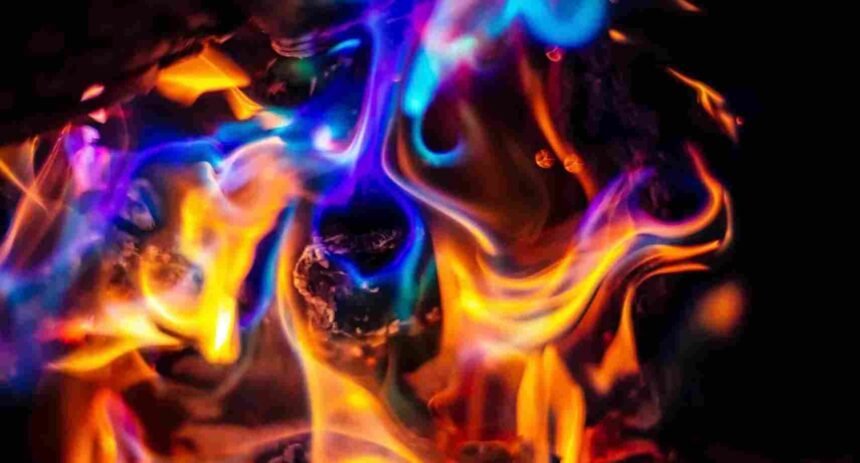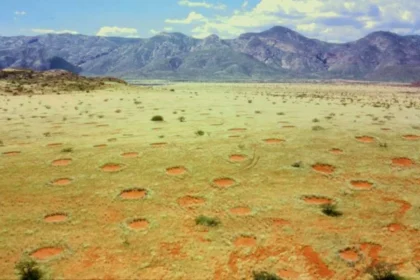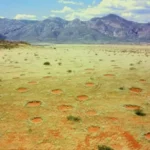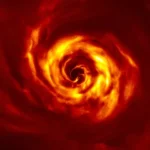You can endlessly look at three things: how water flows, how other people work, and how fire burns, changing its colors. But what determines the different shades of flames?
Indeed, you have noticed that the fire emanating from different flame sources has different sizes and shades. A burning candle wick produces a medium-sized orange-yellow flame, while a gas stove flame is typically blue. When a piece of magnesium burns, a bright white flame is released, and when potassium burns, it produces a violet flame. But why is the fire multi-colored? The color of a flame depends on many factors, but its chemical composition mainly influences it.
How fire is formed
When we talk about fire, what we’re really diving into is a process known as combustion. This isn’t just any reaction; it’s a fascinating dance between chemistry and physics that happens when something flammable meets oxygen from the air.
Here’s the play-by-play of what happens:
- Starting the Fire: First, you need something that can burn, like wood or gas. This is your fuel. Then, you introduce oxygen, which is pretty much everywhere around us. But to kick things off, you need a spark or some heat to get the reaction going.
- The Reaction: Once the fuel starts reacting with oxygen (thanks to that initial spark), a chemical reaction occurs. This reaction transforms the fuel and oxygen into new substances, like carbon dioxide and water vapor, and releases energy in the form of heat and light. That’s your fire.
- Heat and Light: The energy released comes out as the warmth we feel from a fire and the light we see as flames. Flames can look different (like yellow, blue, or even green) based on what’s burning and how much oxygen is available.
- Temperature Variations: The temperature of a fire can wildly vary depending on what you’re burning and under what conditions. For example, a spark caused by striking metal can reach temperatures up to 1900°C (that’s hot enough to melt some metals!), while the burning tip of a cigarette might hit around 900°C.
In simpler terms, fire is what happens when fuel and oxygen get together and react in a way that releases a bunch of energy quickly. This process is super common and is the basic science behind everything from campfires to car engines.
What determines the color of fire?
let’s explore how the color of a flame is determined and what each color signifies, especially focusing on the dynamics observed with a Bunsen burner and the implications for everyday fires like those on a gas stove.
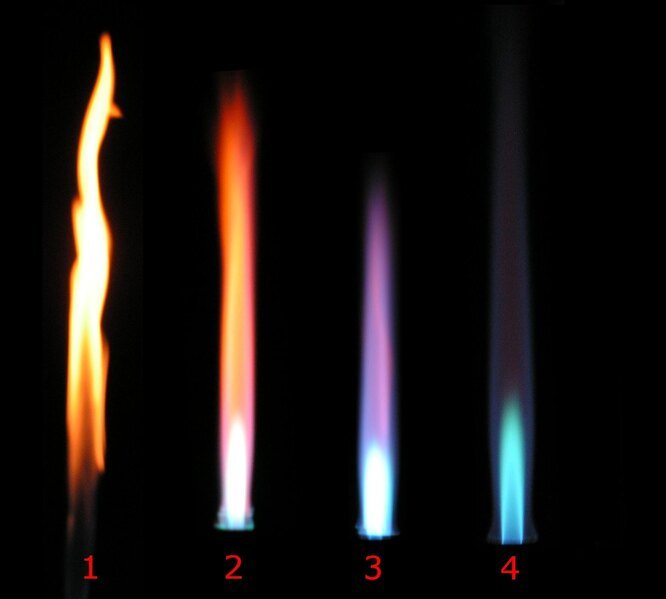
The Science Behind Flame Colors
Temperature and Flame Color
- The temperature of a flame significantly influences its color. Higher temperatures produce blue flames, while lower temperatures yield red or yellow flames. This variation is due to the energy levels of the heated particles within the flame.
Chemical Composition
- The chemicals being burned play a crucial role. Different elements emit different colors when they burn. For example, sodium produces a yellow flame, while copper burns green.
Oxygen Supply
- The amount of oxygen supplied to the flame affects its color. A well-oxygenated flame burns blue, indicating complete combustion, whereas a poorly oxygenated flame burns yellow or orange, signifying incomplete combustion.
Bunsen Burner Experiment: A Closer Look
The Bunsen burner experiment beautifully illustrates how adjusting the oxygen supply changes the flame color:
- Air Hole Closed: With minimal oxygen, the flame burns yellowish or orange, indicating incomplete combustion. This is because the gas doesn’t get enough oxygen to burn efficiently, leaving unburnt carbon particles that glow yellow as they heat up.
- Air Supply Almost Blocked: Slightly more oxygen allows the flame to burn a bit cleaner, but it’s still not enough for complete combustion, so the flame remains at the warmer end of the spectrum.
- Moderately Open: With more air, combustion improves, leading to a hotter, cleaner flame. You might start seeing hints of blue at the base, indicating the temperature is increasing and combustion is becoming more complete.
- Maximum Air Supply: This is where the magic happens. With ample oxygen, the flame burns at its hottest and cleanest, producing a blue color. This blue flame is the hallmark of complete combustion, where nearly all the gas is burned, and carbon particles are fully oxidized.
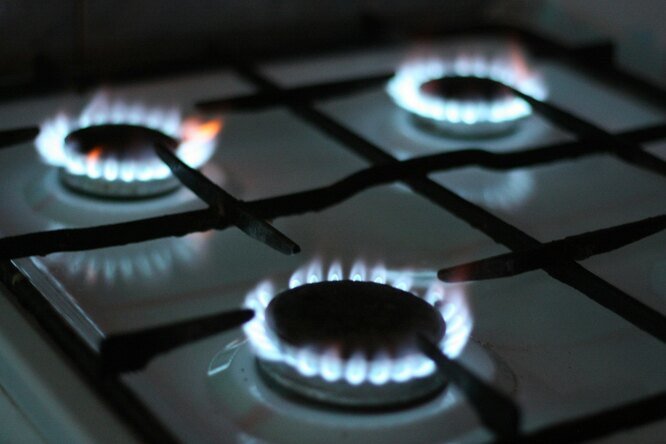
Everyday Examples and Safety
- Gas Stove: When you turn on a gas stove, the ideal flame color is blue, indicating complete combustion. If you see yellow or orange tips, it’s a sign of incomplete combustion, potentially releasing harmful carbon monoxide into your home. Always aim for a blue flame for safety and efficiency.
- Violet and Green Flames: These are less common and usually signify the presence of specific metals. Violet flames can result from burning lithium or potassium, while green flames often involve copper or barium. These colors are more about the chemical composition of the flame rather than its temperature.
Understanding Flame Colors in Depth
- Flame colors change based on how hot they are, which depends on what’s burning and how much oxygen is there.
Red Flame
- Temperature: Starts at 525 °C (980 °F) and goes up to 1,000 °C (1,800 °F).
- Why it’s Red: It’s on the cooler end, showing that the combustion isn’t fully complete, often due to not enough oxygen.
Orange Flame
- Temperature: Ranges from 1,100 °C (2,000 °F) to 1,200 °C (2,200 °F).
- Why it’s Orange: A little hotter than red, meaning slightly better oxygen supply and combustion.
Yellow Flame
- Temperature: Just above orange flame temperatures.
- Why it’s Yellow: Moderate heat, often seen with restricted air supply, leading to incomplete burning of fuels.
- Flame colors change based on how hot they are, which depends on what’s burning and how much oxygen is there.
Red Flame
- Temperature: Starts at 525 °C (980 °F) and goes up to 1,000 °C (1,800 °F).
- Why it’s Red: It’s on the cooler end, showing that the combustion isn’t fully complete, often due to not enough oxygen.
Orange Flame
- Temperature: Ranges from 1,100 °C (2,000 °F) to 1,200 °C (2,200 °F).
- Why it’s Orange: A little hotter than red, meaning slightly better oxygen supply and combustion.
Yellow Flame
- Temperature: Just above orange flame temperatures.
- Why it’s Yellow: Moderate heat, often seen with restricted air supply, leading to incomplete burning of fuels.
White Flame
- Temperature: From 1,300 °C (2,400 °F) to over 1,500 °C (2,700 °F).
- Why it’s White: The hottest flames, showing intense combustion, often with high oxygen levels and energy-rich fuels.
Blue Flame
- Temperature: Between 1,400 °C (2,600 °F) and 1,600 °C (3,000 °F), or higher.
- Why it’s Blue: Indicates high temperatures and complete combustion with plenty of oxygen.
Why Does Wood Burn Yellow in Open Air?
When you burn wood outside where there’s lots of air (and oxygen), you might wonder, “If there’s so much oxygen, why is the flame yellow instead of blue?” The answer is pretty cool!
Wood has a lot of tiny bits in it that you can’t see. These are called carbon particles. When you burn wood, these tiny bits get heated up a lot. When they get really hot, they glow yellow! So, the yellow color you see is actually from these super hot tiny bits, not because the wood isn’t burning well. There’s plenty of oxygen; it’s just that wood has a lot of these carbon particles that make the flame yellow.
Why Is the Gas Stove Flame Blue and Hotter?
Now, for the gas stove at home, it’s a bit different. Gas is cleaner than wood; it doesn’t have those tiny bits that glow yellow. When gas burns with less oxygen (like when some holes are closed), it can still burn very well because gas and oxygen mix really well together, much better than air and wood. That’s why the flame is blue.
Blue flames are hotter than yellow flames. This is because the gas is burning very efficiently, meaning it’s using up all the oxygen it gets to make as much heat as possible. Even when there’s less oxygen, like with fewer holes open on the stove, the gas can mix with the oxygen around it really well, so it burns hot and blue.
So, burning wood outside gives us a yellow flame because of all the tiny glowing bits in the wood. And the gas stove burns blue and hot because gas is a very clean fuel and burns really well, even with a little less oxygen.




